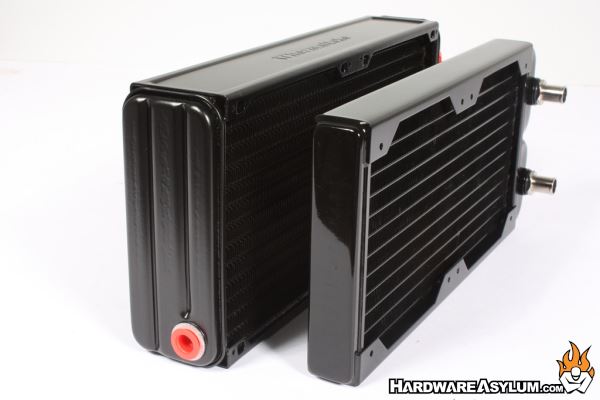How to Build Your Watercooling Loop? What is Needed
Author: Dennis GarciaPrimary Components - Res and Rad
A reservoir is the most wanted optional accessory for any watercooling kit. There are many theories on if you need a reservoir and if so how large it should be. Thing is you can build your loop without one however, filling the loop becomes increasingly difficult.
This is where a reservoir can help and as the name suggests it is simply a tank to hold water that will in turn feed your pump. It can also be used to collect any air you may have trapped in the system and ensure the smooth operation of your loop.

Sizing a reservoir is pretty simple but is one of the few components that are dependent on other items in your loop. To begin ask yourself a few questions.
- Will you be using a pump + res combo?
- How much room do you have in your case?
- How big are your radiators?
- Do you have external 5.25” drive bays?
My Suggestion: Consider where you are going to place the reservoir and then consider cost.
Some additional notes: For basic cooling loops consider a pump + res combo over individual parts.
Pump + res combos “should” be mounted vertically but is not a requirement provided the outlet is pointed down.
Pick a res based on radiator size eg, single 120mm rad = small res, triple 140mm rad = large res, this will help when filling the system and give you more water to keep the system cool.
A reservoir is easily one of the most expensive parts of a cooling loop so consider where you are going to place the reservoir before making a purchase and if in doubt consult the mfg to get the product dimensions.
Pump options have come a long way. Eheim and Hydor were commonly used in older builds and worked quite well. Unfortunately they were quite large and required wall power which made them less desirable in the long run. Modern watercooling kits are all based on the Laing series which are not only small and powerful but run on 12v power.
My Suggestion: Consider a pump + res combo
If given a choice go with a variable speed D5. The D5 is larger than a DDC so make sure to check with the mfg for product dimensions before allocating space inside your build.
The final primary component is the radiator and is arguably one of the most important components you will need to buy. Sizing a radiator is 70% fitment, 20% performance and 10% brand and by this I mean you should get the largest radiator you can that will still fits inside your case.

Size of a radiator will determine the type and number of fans you will need and the overall surface area will determine total heat transfer. There are some variances but generally speaking a single 120mm x 25mm radiator will dissipate about 250w of heat which is equal to a highly overclocked LGA 2011 or a single high-end video card.
My Suggestion: Process of elimination
Start by determining where you can mount a radiator and make sure you have room for fans. Next figure out your heat loading and pick a radiator that fits. Eg, you are cooling a cpu and 2 video cards 91w + 250w + 250w = 591w. For this you will want something at or larger than 240 (2x 120mm).
If it turns out you only have room for a single 120mm then you’ll have to scale your system back.

